Treasures of The World’s Largest Private Collection of Original Manuscripts
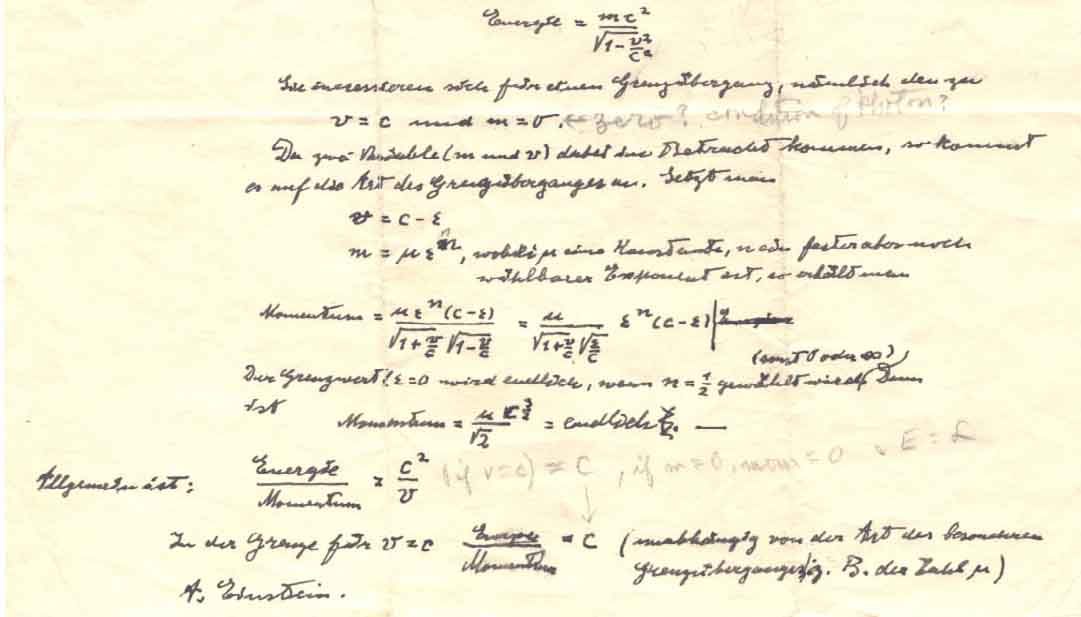 Einstein’s Theory of Relativity. (All Photos: Courtesy Karpeles Manuscript Library Museums)
Einstein’s Theory of Relativity. (All Photos: Courtesy Karpeles Manuscript Library Museums)
This story was sponsored by the fine folks of Enjoy Illinois.
Reading about history is interesting, but seeing the original documents, complete with hand-written notes and doodles in the margins, allows a whole new level of connectivity across the ages.
Founded in 1983, the Karpeles Museum is the world’s largest private collection of original manuscripts and documents. With 11 locations across the U.S.A., the museum’s treasures span literature, arts, science, and history, such as Webster’s original dictionary, the original draft of the Bill of Rights, and Einstein’s famous equation.
In partnership with the Karpeles Museum in Rock Island, Illinois, we’ve selected some of the most awe-inspiring original documents. Below, check out Christopher Columbus’ report on his last voyage of discovery to the New World, Rene Descartes’ treatise on physics and math, Galileo’s last book announcement, and many other precious items.
CHARLES LINDBERGH’S LANDING CITATION
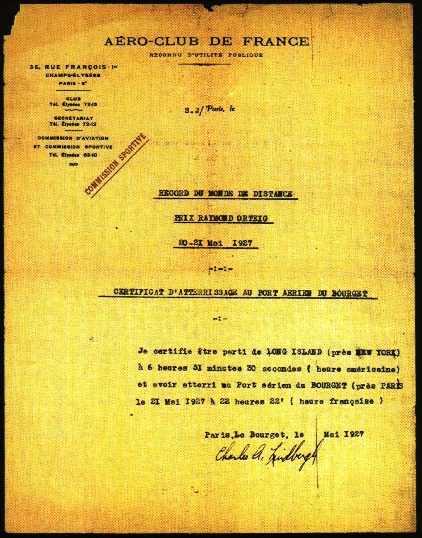 Lindbergh’s landing citation from Le Bourget field in Paris, 1927.
Lindbergh’s landing citation from Le Bourget field in Paris, 1927.
On the morning of May 20, 1927, equipped with four sandwiches, two canteens of water, and 451 gallons of gas, Charles “Lucky” Lindbergh set out to do what no man (or woman) had ever accomplished: fly non-stop across the Atlantic alone.
The former mail pilot, backed by a group of wealthy businessman, took off from the dirt runway of Roosevelt Field, Long Island, in his trusty “Spirit of St. Louis.” Lindbergh covered the 3,600-mile distance in just over 33 hours, contending with darkness, sleet, and navigational difficulties. He finally landed at Le Bourget Field, in Paris, to an ecstatic crowd of supporters.
The document above is Lindbergh’s original landing citation in Paris, stating, “I certify that I left Long Island (near New Island) at 6:51 and 30 seconds (American time) and have reached the airport of Bourget (near Paris) on May 21, 1927 at 10:22 (French time).”
THE HARVEIAN ORATION
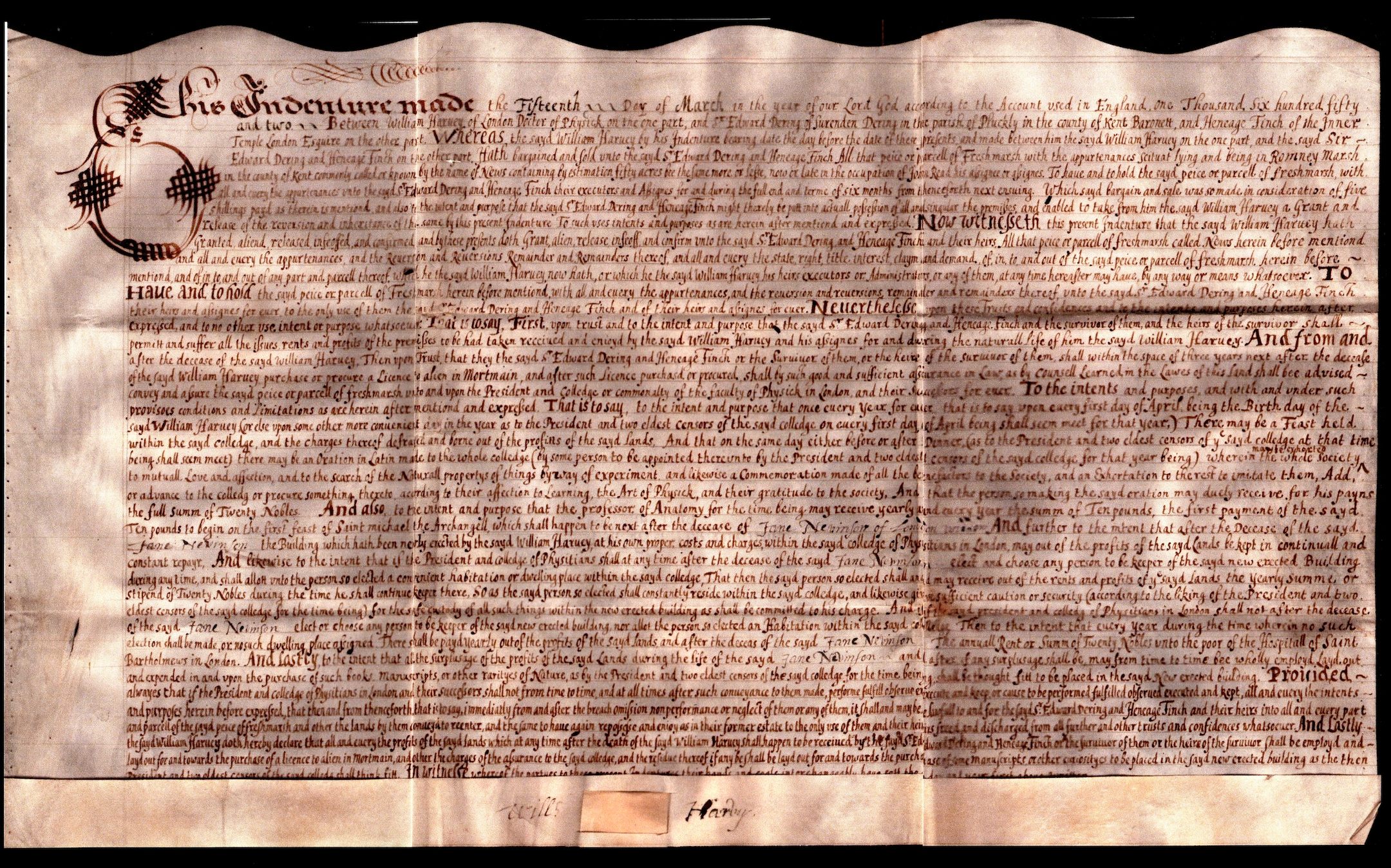 The manuscript from 1652 wherein William Harvey, discoverer of circulation of the blood, establishes and funds the Harveian Oration.
The manuscript from 1652 wherein William Harvey, discoverer of circulation of the blood, establishes and funds the Harveian Oration.
Best known for his discovery of the circulation of the blood, William Harvey was a notable doctor, instrumental in developing the scientific method of inquiry, and as an early promoter of scientific education.
The document above, dated to 1652, establishes the Harveian Oration, a yearly lecture held at the Royal College of Physicians in London, held to this day. Written five years before his death, the document states, “that once every Year for ever, that is to say upon every first day of April, being the Birth day of the sayd William Harvey … There may be a Feast held … [and] there may be an Oration in Latin made to the whole College … wherein the whole society may be exhorted to mutuall Love and affection, and to the search of the Nature and propertys of things by way of experiment.”
CLARA BARTON’S LETTER ON THE GENEVA CONVENTION
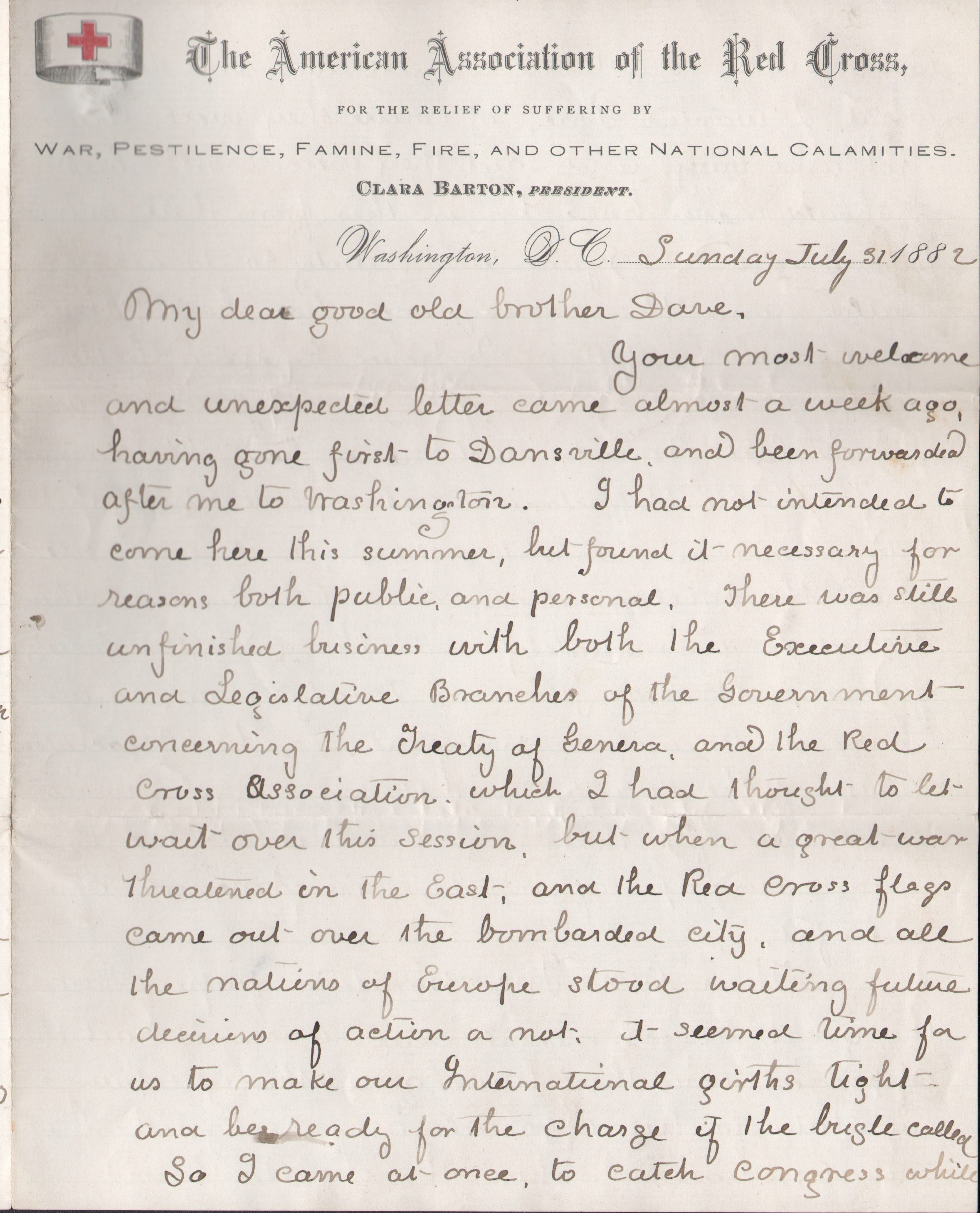 The first page of a letter from Clara Barton, founder of the American Red Cross, where she discusses the ratification of the Geneva Convention, from 1882.
The first page of a letter from Clara Barton, founder of the American Red Cross, where she discusses the ratification of the Geneva Convention, from 1882.
This document, dated to 1882, was written by Clara Barton, the founder of the American Red Cross. In the letter, she discusses the ratification of the Geneva Convention, which was used to protect the sick and wounded during times of war. The Geneva Convention gives the Red Cross its ability to work across global conflicts in the pursuit of humanitarian efforts. This is the only surviving copy of the letter.
COLUMBUS’ LETTERA RARISSIMIA
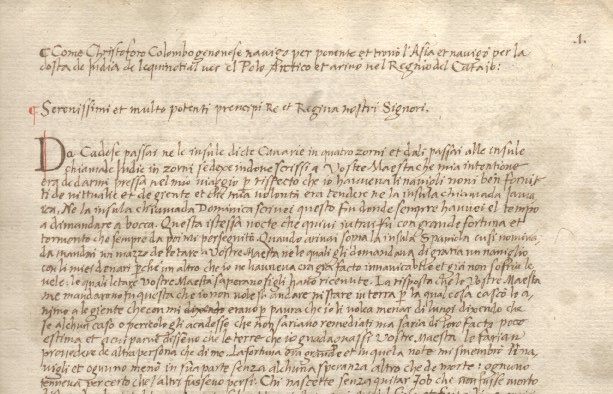 Columbus’ “Lettera Rarissima”, a letter describing His Last Voyage of Discovery to The New World in the year 1502-3.
Columbus’ “Lettera Rarissima”, a letter describing His Last Voyage of Discovery to The New World in the year 1502-3.
The Lettera Rarissimia above is Columbus’s report of his Last Voyage of Discovery to The New World in 1502-3. The Lettera Rarissimia was Columbus’s first letter detailing the coastline of the American continent, as in his previous voyages he had only visited the outlying islands.
Contrasting with his previous reports, Columbus describes the difficulties, illnesses, and storms that plagued him and his crew. In one terrifying episode, Columbus’s ship was grounded off the coast of Jamaica, and he could not seek the assistance of the islanders, whom he thought to be hostile. He wrote this letter, and sent a few of his best men in a small dinghy to seek rescue from the governor of Santo Domingo.
After a harrowing nine months waiting in the ship, rationing food and water, Columbus and his crew were rescued.
GALILEO’S LAST BOOK ANNOUNCEMENT
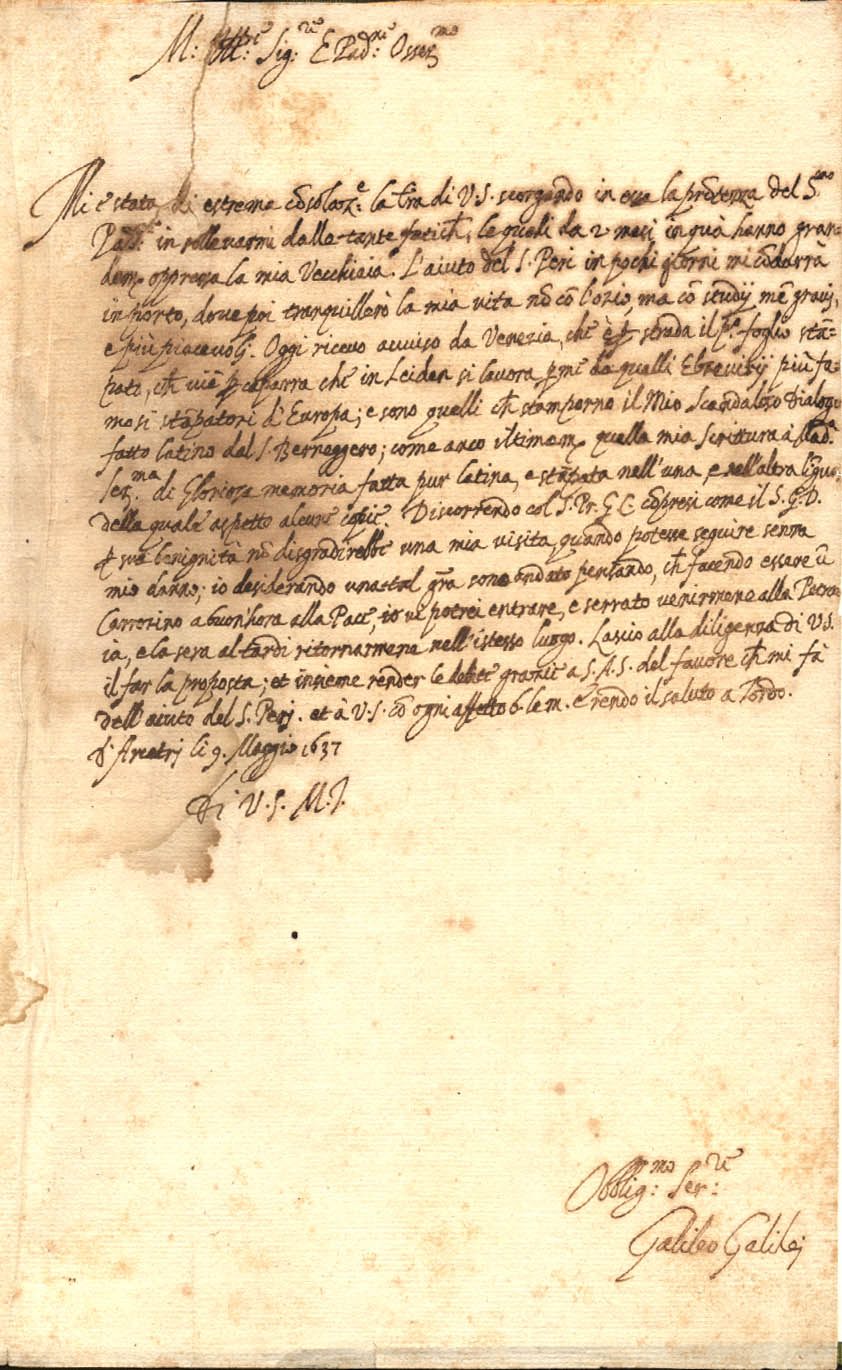 The announcement by Galileo of the completion of his publication ‘Dialogue on Two New Sciences’.
The announcement by Galileo of the completion of his publication ‘Dialogue on Two New Sciences’.
This document is the last surviving copy of Galileo’s announcement of the completion of his famous publication, Dialogue on Two New Sciences. Covering much of the famed astronomer’s work in physics over the preceding 30 years of his life, the Dialogue on Two New Sciences is often heralded as the beginning of the field of modern mechanics.
Published in 1638, this book was Galileo’s final publication, before he died at the age of 77 in 1642.
JOHN LOCKE’S ESSAY ON HUMAN UNDERSTANDING
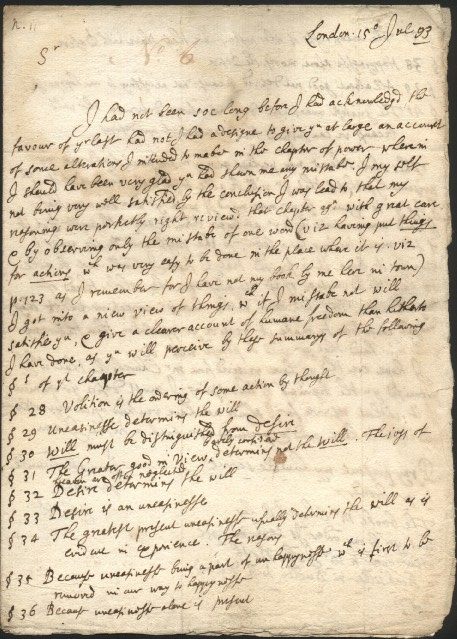 An excerpt from John Locke’s ‘Essay concerning Human Understanding’, 1689.
An excerpt from John Locke’s ‘Essay concerning Human Understanding’, 1689.
Philosopher, physician, and Enlightenment thinker John Locke’s influence on the modern world is hard to underestimate. Seen here is an excerpt from his Essay Concerning Human Understanding, handwritten by Locke himself in 1689, but not published until 1690.
Locke’s essay sets the foundation of empiricism in modern philosophy, positing that the mind of an infant is a “blank slate,” and it is filled with thoughts and ideas through the experience of life. The thesis of the Essay Concerning Human Understanding served to inspire later Enlightenment thinkers, such as David Hume, and its influence can be traced through the American Constitution—Thomas Jefferson changed Locke’s phrase, “Life, Liberty, and Property,” to the now famous, “Life, Liberty, and the Pursuit of Happiness.”
RENE DESCARTES’ TREATISE
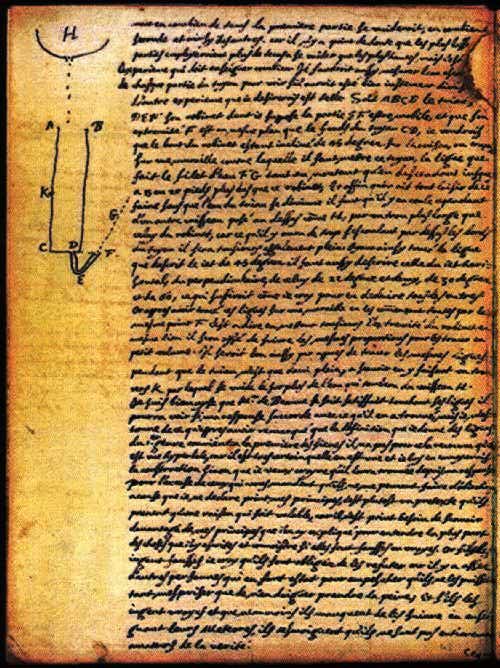 Rene Descartes’ treatise.
Rene Descartes’ treatise.
Rene Descartes, often regarded as the founder of rational modern philosophy, hand-wrote the above treatise on physics and mathematics, written in Latin. In the margin, Descartes works out the equation of a tangent at an angle of 45 degrees to a curve.
While such equations are the bane of high-school students across the world, Descartes took great pleasure in solving them. In the treatise, he cheekily adds that solving this equation took him nowhere near the “fortnight that another [nameless] mathematician had supposed, since when he is working for himself, he abbreviates heavily.”
Descartes passed away in 1650, but his works are closely analyzed by scholars to this day.



Follow us on Twitter to get the latest on the world's hidden wonders.
Like us on Facebook to get the latest on the world's hidden wonders.
Follow us on Twitter Like us on Facebook